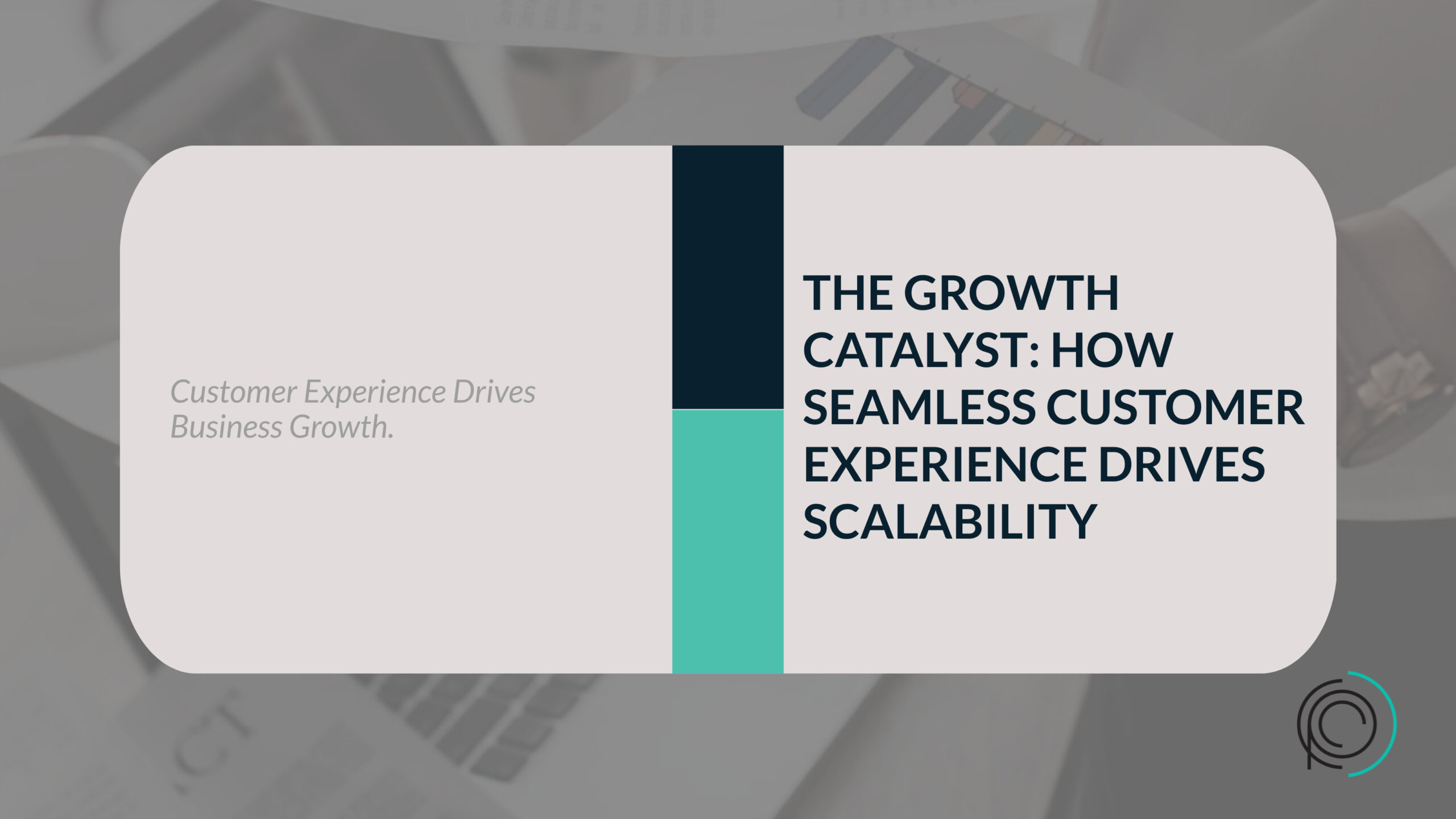Revolutionizing Customer Engagement: How CCaaS Transforms Experiences and Drives Business Success
In today’s commercial ecosystem, customer experience is very often the mothership of business success. As the pace of change affects marketplaces and the needs of consumers, it has always been essential for businesses to have a contact point with which to interact with -and deliver meaningful experiences to- their customers.
It used to be that the solution to delivering these meaningful experiences required heavy on-site investment; necessitating large rooms with endless rows of service agents fielding telephone calls, and using limited-yet-expensive software. These days, businesses require and operate a typically dynamic and proactive engagement center responsible for driving real business results, revenue, and long-term loyalty – CCaaS.
CCaaS is the better-known, of the Contact Center as a Service business. As a cloud-based solution, it combines the voice connectivity of legacy call centers with digital channels, text messaging, social media, and in some cases Artificial Intelligence. By capitalizing on the cloud, CCaaS absolves an organization of the headaches associated with on-site hardware and optimizes (into one platform) the entire gamut of tools a business needs to start a contact center. The result is a modern, and far more holistic, answer to complex customer experience issues that businesses face today.
This is perhaps the best reason why companies are increasingly invested in CCaaS offerings. Not only can businesses set up a contact center at less than half the cost; they can also do it with the flexibility that a company set on growth needs.
What is Technology and Process Stack Mapping?
Thanks to the benefits they provide, CCaaS solutions are nearly ubiquitous in today’s business ecosystem. Providers ensure access to an efficient, cost-effective solution for companies that want to optimize their business and get a handle on their customer engagement. The trade-off for these visionary products, of course, is that they also have to keep pace with market and business changes; optimizing as best as they can to deliver on their value proposition. The most essential consideration in this endeavor is technology and process stack mapping.
“Stack” is an IT-derived term that refers to how various platforms “stack” together to deliver an IT solution. For CCaaS solutions, it’s no different. Providers utilize (and integrate) a range of technologies and processes to deliver on their premise: managing, publishing, tracking, testing & optimization, analytics, etc. To maximize their offerings, it is an essential edge to be able to visualize the landscape through the information these maps provide. They also help us understand and plan the supporting technology and processes needed for a seamless customer and agent experience.
Technology stack mapping, as it must now be obvious, heavily utilizes diagrammatic representations of these “layers”. For business processes, it becomes the graphical description of the cogs of the operation; who does which tasks, and how they can be refined. Technology stack mapping on the other hand is only different in that it relates to the end goal of deploying and utilizing technology in a way that is most compatible with the business.
In both cases, they combine to ensure that CCaaS solutions are best able to adapt to market and business changes, maximize efficiency, and deliver on their value proposition.
Technology and Process Stack Mapping for CCaaS solutions
CCaaS technology combines all of the essential functionalities of a traditional contact center, such as call routing, recording, and management systems. Even better, it allows businesses to expand on these tools, and unlock access to bespoke and Big Data-backed analytics, tracking, optimization, and integrations.
Yet, as the cloud Technology responsible for enabling CCaaS continues to evolve, providers cannot be rigid with experiences they can create, especially in a transformative environment. All the leading vendors in the marketplace keep their edge because they are constantly discovering new ways to improve both user and customer experience in the cloud, with technology that’s more intuitive and informative than before. This, they cannot do, without fully understanding and mapping out the current state.
In implementing a new CCaaS solution, (or bettering an existing product), mapping your current state simply affords you undeniable advantages and aids you in making better more informed decisions. For instance;
-
It allows greater insights into the ripple effects of adding or swapping new technologies and processes into your business model. Ordinarily, any alteration can be incredibly disruptive if not downright risky without the insights a stack map gives. Especially since many of these systems have the ability to affect customer satisfaction and impact the client’s bottom line.
-
Maps also allow providers to understand where integrations are either required, recommended, or even possible. Once all of the technology and processes are mapped out, their purposes are better understood, and one can see places where two systems should share data. Otherwise, you completely lose the real-time “single view” of the customer because you have systems acting in a silo.
-
Furthermore, each piece of Technology serves a purpose, and mapping out the stack will help you identify redundancy and gaps in your operation. Mapping out the stack further forces you to think through your marketing needs as you attempt to seize more market share. It’s not unheard of that CCaaS market leaders shift an entire marketing strategy based on identifying a capability gap their peers never knew existed. This brings us to the final point.
-
Maps allow providers to demonstrate the degree of complexity of your operation. Maps are quite simply a telltale sign of a premium CcaaS solution, and a provider who has their bases covered. Not only can you use these diagrams to facilitate conversations with potential clients as well as partners or vendors that are looking to understand how you manage a particular part of the operation.
What Inadequate Technology and Inefficient Processes Mean to Contact Centers.
The risks of not mapping are equally as impactful. Firstly, you won’t be able to deliver on your value propositions and will create a disjointed customer experience for those on the User-end. It is likely that this affects quality and customer retention since they will feel the brunt of customer dissatisfaction.
Another effect is that your support teams become less productive because inefficient Technology and processes inadvertently silo the team and make it harder to execute cross channel/omnichannel solutions.
Finally, inefficiencies are bound to affect your bottom line. For instance, the industry is already witnessing the emergence of derivative solutions that cater to the same problem. For instance, contact centers can exist as a solution tailored to a sales or customer service department (CCaaS), or as an add-on to the UCaaS (Unified Communications as a Service) environment.
As companies try to cut down the number of tools that employees need to jump between to stay productive, it’s expected that we’ll see an increase in customizable-as-a-service stacks, empowered by Technology like CPaaS and APIs for more modular control. If your contact center cannot meet the expectations of clients, it’s likely it will not survive long.
Here’s why you probably need us.
It’s been established that mapping your current state can afford you the benefit of capturing impact at scale and leveraging the insights gotten for growth and efficiency. In other words, they inform the lifeblood of your business. However, CcaaS solution s are complex and tricky arrangements. That is until you involve us.
Utilize our strategic sourcing capabilities, so that you can make your CCaaS project as simple and efficient as possible. Our experience and datasets on CCaaS solutions will distill the project sourcing, vetting, and implementation process into a simple checklist and discovery call.







